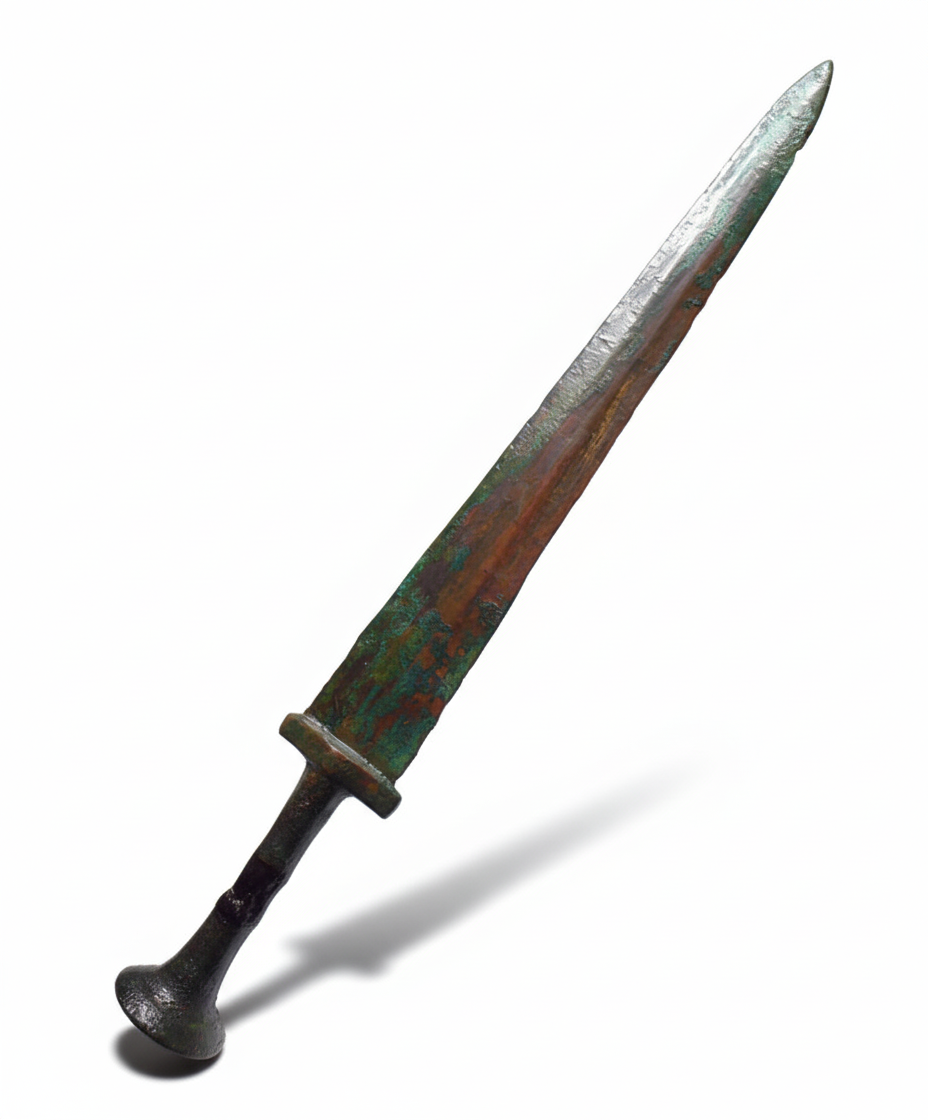The Iron Age
- Aidan Mackinnon
- Sep 9
- 3 min read
The Iron Age represents a pivotal chapter in human history, marking the widespread adoption of iron for tools and weapons, effectively replacing the softer bronze that had dominated for centuries. The arrival of this new era wasn't a universal event but a gradual, geographically varied process. It began in the Middle East and southeastern Europe around 1200 BCE, but it wouldn't reach China until roughly 600 BCE, illustrating a slow but steady spread of a transformative technology.
From Bronze to Iron

The reason bronze had to precede iron is a matter of simple metallurgy. Bronze is an alloy of copper and tin, both of which are relatively easy to smelt. Copper can be extracted from its ore at a much lower temperature (around 1,085C) than iron, which requires a blistering 1,538C.
Early furnaces and tools simply couldn't generate the necessary heat to work iron effectively. In addition, the process of smelting iron is more complex. While copper and tin can be simply melted and mixed, iron ore must be heated in a low-oxygen environment with charcoal to reduce the iron oxide.
This more demanding process meant that for millennia, iron remained a scarce and difficult-to-work material.
The Collapse
The widespread shift from bronze to iron was accelerated by a period of profound upheaval known as the Bronze Age Collapse. Around 1200 BCE, a series of catastrophic events brought down many of the major civilizations of the late Bronze Age. The Mycenaean civilization in Greece, the Hittite Empire in Anatolia, and powerful cities in the Levant were all decimated by a combination of factors, including climate change, drought, widespread famine, and invasions by a mysterious group known as the "Sea Peoples." This collapse severed the long-standing trade routes that supplied the tin necessary for bronze production.
With the flow of tin severely disrupted, the elite classes who relied on bronze for their weaponry and status were suddenly at a disadvantage. Their highly centralized, interdependent economies crumbled. This created a power vacuum that allowed for the rise of smaller, more regional powers who, forced to find a new, more abundant material, began to master ironworking. The collapse of the old order inadvertently paved the way for a new one, built on a more accessible and resilient metal.

A Metal's Meteoric Rise
While iron had limited use as a precious metal as early as 3000 BCE in the Middle East, there is no indication that people at that time recognized its superior qualities over those of bronze. Between 1200 and 1000 BCE, however, the export of knowledge of iron metallurgy and of iron objects was rapid and widespread.
The adoption of iron had a profound effect on societies. It was tougher and held a better edge than bronze, making it superior for everything from agricultural tools to military equipment. This new, more accessible metal democratized technology; a strong plow could now be afforded by more farmers, leading to greater agricultural yields. Iron weapons gave armies a new, decisive edge in battle. This led to significant social and economic shifts, allowing new civilizations to rise and flourish with this newfound technological advantage.
Beyond the Iron Age
The Iron Age didn't end with a sudden event but transitioned into the classical and medieval periods, where iron continued to be the dominant metal. The knowledge of steel-making—alloying iron with carbon to create a stronger, more resilient material—began to emerge. The Romans, for example, were masters of iron and early steel, using it to build their legions' swords and vast engineering projects.
Over the following centuries, metallurgy continued to advance, eventually leading to the Industrial Revolution in the 18th century. This era saw a dramatic increase in the production and use of iron and steel, which became the backbone of modern civilization. From the steam engine to the skyscraper, the legacy of the Iron Age lives on in the steel that forms the foundation of our world today.





Comments